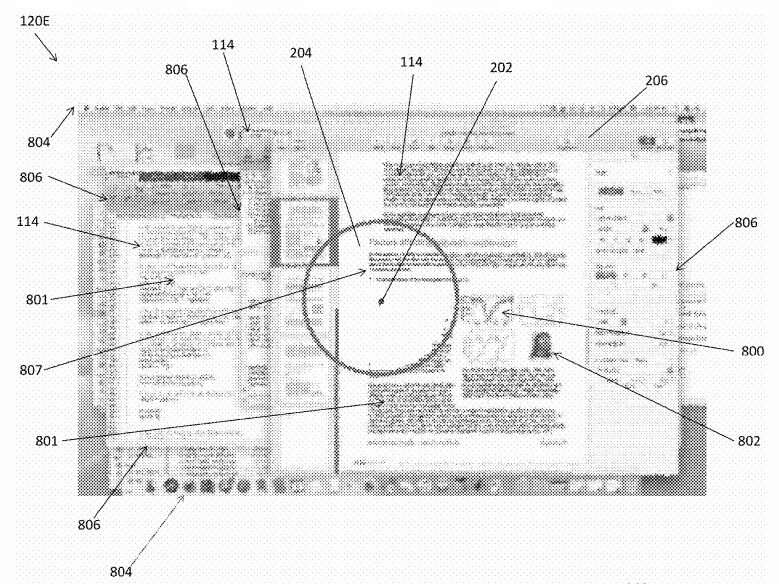March 16, 2020 report
Apple to patent snoop-proof screens

Secret digital intrusions into our computers and mobile devices have garnered increasing attention in recent times. But a decidedly lower-tech assault has also been troublesome: shoulder surfing. You know the types: friends, work colleagues and assorted passers-by who walk by you and can't resist quietly peeking over your shoulder at the content of your screen while you're blasting the boss, watching cartoons or recounting last night's passionate encounter with your lover.
As Martin Cooper, known as the father of the handheld cellphone, once put it: "Privacy is a thing of the past."
It was reported this week that Apple has its eye on the problem. A recently uncovered patent application by the tech giant reveals it is looking into a technology that will distinguish between user and unwanted onlookers and blur screen content not intended for unauthorized eyes.
Called "Gaze-dependent display encryption," the app would utilize face recognition to determine the owner of the device and eye-tracking to determine what segment of the screen the authorized viewer is scanning at the moment. When unknown faces appear, either directly in front of the device or in the background, gaze encryption would be activated.
For instance, if an authorized viewer is reading a screen and a snooper appears in the background, eye-tracking will leave currently viewed spots untouched while it renders the remainder of the screen indecipherable to onlookers. The obscured segments will resemble the text or image displayed, but scramble it sufficiently to be indecipherable. Such manipulations will include text scrambling, color altering and image warping.
The app will likely be initially applied to iPads, iPhones and desktop units, but may well be used on wearable devices such as smart watches.
Recent efforts to control unwanted snooping include the Blackberry phone's commendable Privacy Shade feature introduced in 2018. Tapping a button allows you to display a limited area while blotting out the remainder of the screen. Text within a narrow horizontal or circular rectangular area displays normally, while the user controls the opacity of the reminder of the space.
HP introduced its own version of Privacy Shade a year earlier in its EliteBook x360 laptop. Tapping a button allowed the screen to be viewed solely by a viewer looking directly at it; the screen darkened and blurred if viewed from any angle off-center.
Snooping has a long, colorful history, from the days 1,000 years ago where entire families, visiting relatives and friends—and even animals—witnessed everyone else's business in homes that had no walls and where humans and beasts occupied the same room. Early phones in homes relied on "party lines," shared wires on which anyone could quietly eavesdrop on neighbors. And with the introduction of postcards, some 200,000 New Yorkers purchased them the first day they were offered in May 15, 1873, spilling often intimate details on sheets of cardboard that could be read by postal workers and mail carriers.
And many may remember the 1960's TV spy-comedy "Get Smart," where bumbling Agent Maxwell Smart routinely entered the room-sized "cone of silence" for highly confidential exchanges with fellow spies. The running gag was that the room made it impossible for the cone occupants to hear one another, while their conversation was easily picked up by all outside the room.
It's too early to know when or even if Apple will implement the new anti-snoop technology. Apple submits many patents that never see light of day.
But given increasing attention to the problems of privacy—Intel CEO Andrew Grove years ago observed that "privacy is one of the biggest problems in this new electronic age"—Apple will likely aggressively pursue this and other innovative solutions to an age-old problem.
More information: GAZE-DEPENDENT DISPLAY ENCRYPTION, United States Patent Application 20200081527
© 2020 Science X Network





















